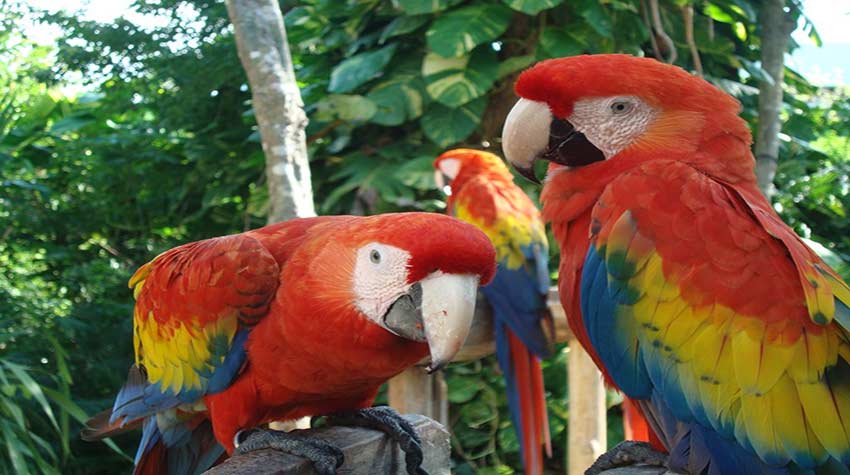One tree breathes, two trees breathe twice as much and in the case of the Amazon it is the world’s largest rainforest that breathes. And it does so with force, because millions of trees live in its immense territory of about six million square kilometers, eight times greater than the Borneo rainforest, depleted by 75%, largely during the last three decades of the Last century. The one that was recently the lung of Southeast Asia, today is a mutilated and diseased organ. The predation was such that the huge island became the first timber exporter on the planet, larger than Africa and Brazil together. The consequences of this disaster were not long in coming. Borneo and its zones of radiation or influence (some believe it comprises from Chile to Australia), suffered a drastic local climate change, no doubt of anthropogenic origin. In the case of the Amazon, to have a better idea of its size, the South American rainforest could accommodate almost twelve times the territory of Spain. Consequently, it is possible to imagine the magnitude of the damage that would cause its deforestation if it continues by the way of Borneo, which already is going and if it does not stop will create a global climatic cataclysm, since its zone of irradiation or influence is not only local but the entire planet.
Trees produce oxygen, vital to most species, and in turn absorb carbon dioxide, CO2, the major component of greenhouse gases, GHG, causing global warming, the main trigger of climate change. During photosynthesis, the process performed by trees and most of plants, they absorb and store CO2, which is fixed in its roots, trunks and leaves in the form of carbon. The plants, although they take oxygen from the air and re-enter carbon dioxide, the final balance is positive in favor of the extraction of CO2 from the atmosphere. The capacity of carbon dioxide absorption is directly proportional to the size, density and quantity of plants and trees present in a forest.
In the Amazon jungle, there are about 80 thousand kinds of trees and more than 140 thousand species of plants. They are hundreds of millions of copies that absorb water and then return it, through its leaves, in immense amounts of water steam to the atmosphere, a mega transpiration that forms the clouds, from which the vital liquid returns through passing drizzles or prolonged downpours, which in part precipitate over the forest itself, whereby their forests maintain a constant humidity, although they also irrigate distant places like the Andes mountain range. This gigantic biochemical machinery gives us an idea of its importance and explains why it is called the “lung of world”, and worries that it could disappear in less than half a century.
The natural greenhouse effect of the Earth is a phenomenon that has allowed for millions of years to maintain temperatures in a fairly uniform range, necessary to develop and maintain a great diversity of life in it. How does it work? Solar rays arrive from space, bounce off the surface of the planet and try to escape back into the cosmos, but are trapped by the atmosphere and as a consequence the vital condition of uniform temperature occurs. If this phenomenon were not to happen, Earth would be an icy planet, probably uninhabited like most others, or at least unfit for life as we know it. All this is due to the gases involved in it, which is why they are called greenhouse gases, such as water vapor (H2O), carbon dioxide (CO2), methane (CH4), oxide of nitrogen (N2O) and ozone (O3), although the highest volume corresponds to the first two.
According to some scientists, the concentration of CO2 in the atmosphere has increased since the beginning of the industrial revolution, 1750, changing the composition of the atmosphere and the natural greenhouse effect of Earth, increasing its temperature in a process apparently slow, from the point of human chronometry, but almost instantaneous with respect to geological times. It is estimated that two thirds of this increase come from the burning of fossil fuels, such as oil, gas and coal, while the remaining third comes from the deforestation of large tracts of forests and jungles. In the Amazon, the destruction of forests is already well under way to clear land for urbanization, agriculture, livestock, logging, oil and mining, road construction, oil pipelines, hydroelectric dams, and about 30 million people live in the Amazon Basin. All this represents a human intervention on a large scale, never occurred on the planet, so there is no previous experience of something like this, which, if not stopped, would irreversibly affect the lung of the world and therefore all inhabitants of this blue point called Earth.
As the trees are cleared, the Amazon will reduce the amount of water steam released into the atmosphere, reducing humidity and rainfall in the jungle and increasing drought. Something already happened in Borneo at a catastrophic level, as explained in another article, where homo sapiens, through the uncontrolled felling of trees, made one of the largest wetlands in the world, one of the most important rainy reservoirs on the planet, where only a little more than half a century ago, the humidity and the mud made a forest fire unimaginable, in an arid, dry and hostile place, unfit for animals and plants in most of its territory, where fires of vegetation belong to all the days. Borneo is a very serious case of human unconsciousness to the environment, which should be the rear-view mirror of humanity, to look at what might happen to the Amazon jungle soon if the problem is not tackled in time.
Sandor Alejandro Gerendas-Kiss







Leave A Comment